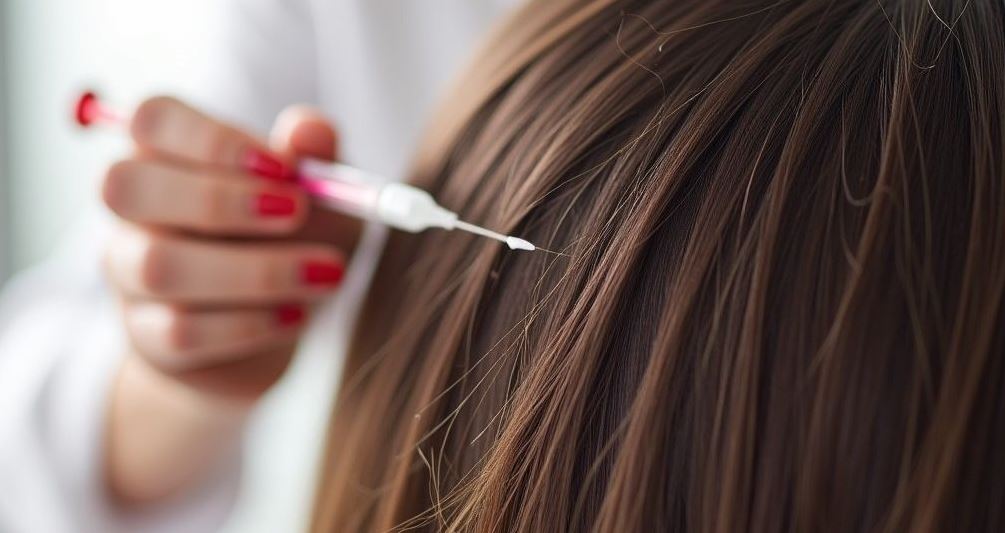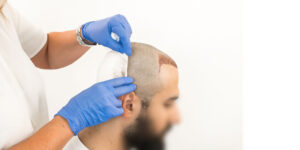In today’s beauty-obsessed and youth-focused world, people are always looking for non-invasive treatments that offer real results. Just like Botox revolutionized facial aesthetics by delaying the signs of aging without surgery, a similar innovation is making waves in the world of hair restoration—PRP, or Platelet-Rich Plasma therapy. The buzz around it is growing rapidly, but is it really the hair equivalent of Botox? In the middle of all the excitement and claims, one question remains: Can PRP live up to the hype?
The hair prp treatment involves drawing a patient’s blood, processing it to extract platelet-rich plasma, and injecting that plasma into the scalp. The theory is simple—platelets are rich in growth factors, and when introduced to the scalp, they can potentially stimulate hair follicles, improve blood circulation, and promote natural hair growth. This treatment has quickly become a go-to option for both men and women looking for a solution that doesn’t involve chemicals, surgery, or visible downtime.
What Makes PRP So Popular?
To understand the rise of PRP in hair loss prevention, you have to consider what people want: something that works, is safe, and doesn’t require long recovery periods. PRP checks many of these boxes. Since it uses the patient’s own blood, the risk of allergic reactions or infections is extremely low. The treatment takes about 30–60 minutes and doesn’t typically require anesthesia or hospitalization.
Moreover, just like Botox which can be done during a lunch break and has subtle but noticeable results, PRP offers a gradual but natural improvement in hair thickness and density over time. It’s not an overnight miracle—but neither is Botox. Both treatments require multiple sessions and maintenance, yet both promise a way to slow down the visible signs of aging in a minimally invasive way.
The Science Behind PRP for Hair Loss
PRP was first used in sports medicine and orthopedics to accelerate healing in injured tissues. Doctors observed that the high concentration of platelets, which are rich in growth factors, could repair cells and tissues faster. This insight led researchers and dermatologists to explore PRP’s potential for rejuvenating hair follicles.
When PRP is injected into the scalp, those growth factors theoretically “wake up” dormant or weakened hair follicles. This may improve the diameter of individual hairs, extend the growth phase of hair, and decrease shedding. While not everyone responds to PRP, clinical studies have shown a significant portion of users experience thicker, fuller hair after several sessions.
Just as Botox doesn’t freeze time but smoothens wrinkles temporarily, PRP doesn’t create new hair overnight. It strengthens what already exists, making it a proactive defense against hair thinning before the situation becomes irreversible.
Who Can Benefit from Hair PRP?
PRP is not a miracle cure for baldness, but it is proving to be an effective solution for people in the early stages of hair loss. Those with androgenetic alopecia (pattern baldness), thinning hair due to stress, or hormonal imbalances tend to be good candidates. It’s also being used alongside other therapies like minoxidil, finasteride, or hair transplants to improve results.
Another big draw is that PRP can be used on both men and women, regardless of age. While Botox attracts clients trying to turn back the clock on facial aging, PRP speaks to those who want to hold on to their hair longer. It’s the same philosophy—preserve what you have, delay the aging process, and enhance natural beauty with minimal interference.
Botox vs PRP: A Lifestyle Comparison
It’s helpful to draw parallels between PRP and Botox, not just in their intended outcomes but also in how they’re incorporated into lifestyle routines. People who get Botox often include it as part of their seasonal beauty regimen, doing touch-ups every few months to maintain results. Similarly, PRP works best when it’s done as a series of treatments (usually 3–4 spaced a month apart) followed by maintenance sessions every 4–6 months.
Both treatments have their fan bases, and both are celebrated for being relatively safe and straightforward. However, where Botox works by paralyzing facial muscles to reduce wrinkles, PRP works by stimulating natural healing and regeneration. So, while Botox is more of a surface-level aesthetic tweak, PRP is more restorative, working beneath the surface to help the scalp function more like it did in youth.
That said, neither is a one-time fix. They require commitment, consistency, and realistic expectations. But for people who prioritize subtle, natural improvements over dramatic changes, both fit into a broader movement toward preventative self-care.
What the Future Holds for PRP in Hair Loss
As more research comes in and techniques improve, PRP is likely to become even more refined and effective. New advancements might include combining PRP with stem cells, microneedling, or laser therapies for enhanced results. Clinics are also developing custom PRP blends tailored to individual patient needs, similar to how Botox is dosed differently depending on muscle strength and facial structure.
Moreover, public interest and demand for non-surgical beauty treatments are unlikely to fade. As PRP becomes more mainstream, costs may drop, access may increase, and results may become even more predictable. We may even see PRP being used as a preventative option in younger clients, similar to how Botox is now commonly used in people in their 20s to avoid wrinkles before they form.
Final Thoughts
So, is Hair PRP the Botox of hair loss prevention? In many ways, yes. Both treatments represent a shift in how we approach aging—not as something to fear, but as something to manage smartly and gracefully. Just as Botox has become a household name in the anti-aging world, PRP is carving out its niche as a reliable, science-backed option for those who want to keep their hair healthier for longer. At Hashinvasive, we believe in empowering individuals with cutting-edge, non-invasive solutions like PRP to help them look and feel their best—naturally and confidently.
Like all cosmetic treatments, results can vary, and it’s important to consult with a qualified practitioner to see if PRP is right for your unique situation. But if the goal is to look like the best version of yourself without going under the knife, PRP might just be the modern answer your scalp has been waiting for.
Last Update: June 4, 2025





